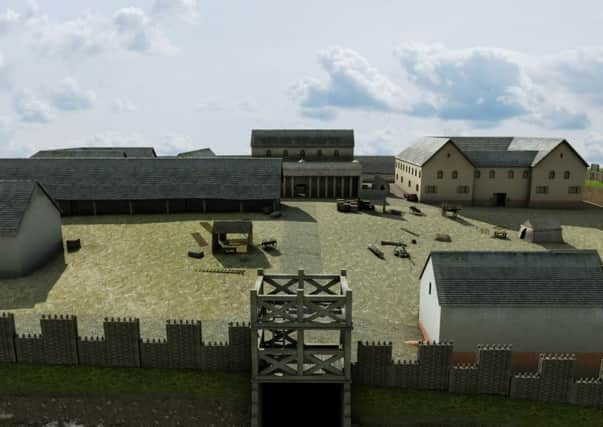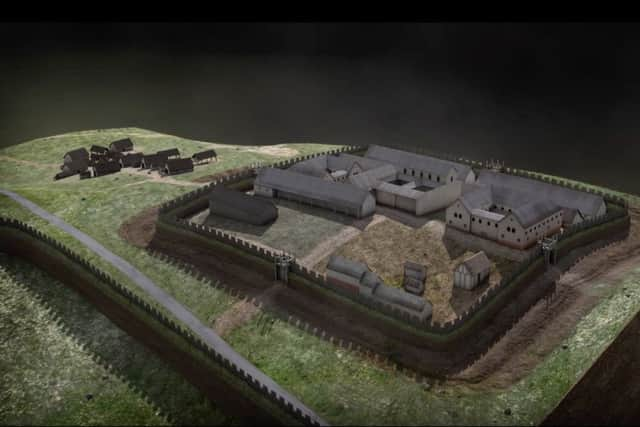Antonine Wall brought back to life using virtual reconstruction


Visual reconstruction experts have released a detailed 3D flyover of how Bar Hill, a large fortified encampment near the present day town of Kilsyth, may have looked when built in the first century AD.
More 3D reconstructions of prominent sites along the Antonine Wall are planned over the next two years to allow the public to better understand the sheer scale of the defensive fortifications built by the Romans.
Advertisement
Hide AdAdvertisement
Hide AdA smartphone app will also be launched to bring together the various 3D models and allow visitors to view them as they explore the ruins.


The virtual reconstructions were created by the Centre for Digital Documentation and Visualisation (CDDV), a partnership between Historic Environment Scotland and Glasgow School of Art.
“The digital reconstruction of Bar Hill is a precursor to more detailed augmented reality projects that will follow,” said Patricia Weeks, Antonine Wall World Heritage Site co-ordinator.
“The reconstructions are designed to be as historically accurate as possible. We work with Roman experts and specialists in their field, who advise the digital experts at the CDDV. We work up using Lidar scans (a detailed laser surveying method) of the site that were undertaken in 2010, and all of those things together give us an accurate 3D model.
“The next stage is to create virtual environments with the images we already have. We can add an augmented reality angle - for example, being able to talk to a Roman soldier, or stand on site and using your mobile phone to view the fort around you.


“We want to explore even more possibilities with digital technology to engage visitors.”
The fort at Bar Hill occupies a three acre site on an elevated position near the village of Twechar, on the boundary between North Lanarkshire and East Dunbartonshire.
Advertisement
Hide AdAdvertisement
Hide AdIt was one of 16 forts built along the 39-mile Antonine Wall, which dates to 142 AD. The turf and stone barrier, once the northernmost frontier of the Roman Empire, was constructed on the orders of Emperor Antoninus Pius but was only in use for around 20 years before being abandoned.
Bar Hill and Roughcastle, near Bonnybridge, are two of the few remaining sites which allow the public to view the course of the wall.
Weeks believes digital technology will play an increasingly important role in the heritage sector in the coming years.
“With the Antonine Wall, this is definitely the way forward,” she said. “It makes the site very easy to interpret for visitors. You can interact with the past.
“But it doesn’t mean we’re stepping away from traditional content on site. We will still have interpretation panels - the digital just adds a layer on top of that. They compliment each other.
“For self-guided tours, who don’t have access to an expert, or for families looking for different levels of interpretation, the digital technology is ideal.
“People will have their phones on site anyway. So we may as well use them to engage with the history rather than other content.
“We can appeal to young people as well as adults.”
